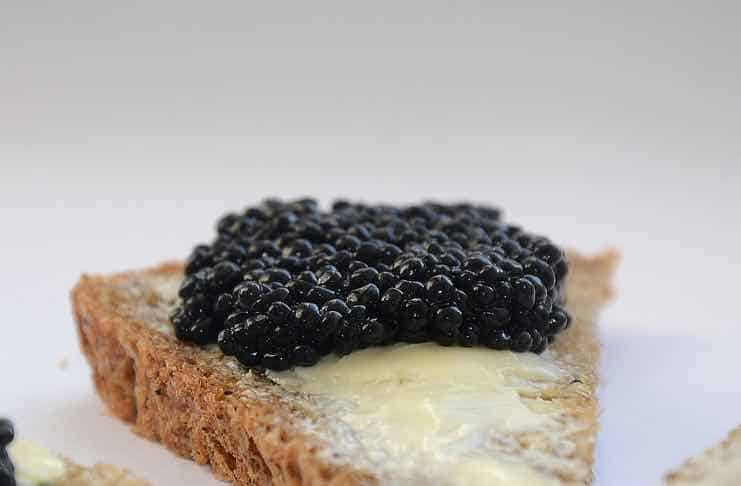The word caviar evokes the golden festivals of a Russian palace, with its women in sparkling dresses and these men in flamboyant uniforms. Indeed, caviar is a luxury delicacy: some varieties are sold for more than $12,000 per kilo! But rest assured, small quantities (20gr for example) are sufficient to appreciate its unique aroma, but at this price, there is no question of making a mistake, so how to choose the right caviar?
What is caviar?
Caviar is a food made from the eggs of the sturgeon (Acipenseridae), one of the oldest living families of bony fish. Once the fish has reached maturity (usually 7 to 10 years), its eggs are harvested by opening its abdomen.
Each fish produces between 300,000 and 2 million eggs. The fish are killed during harvest, which explains the scarcity of the product and its high price.
There are 24 species of sturgeons around the world, but not all of them produce caviar. Some species live in the sea, others in fresh water, and some are anadromous, living in the sea and breeding in rivers.
The biggest producing countries are historically Russia, Iran, Kazakhstan, and Azerbaijan. Today we find other producing countries, including Italy or France.
Traditionally the word “caviar” refers only to the eggs of wild sturgeons coming from the Caspian Sea or the Black Sea. But more and more we use the word (abusively) to refer to eggs of salmon, trout, lump… and even vegetables, such as eggplant caviar. There is also a “white caviar”: dried mullet roe also called bottarga.
The history of caviar
Its origin dates back more than 2,000 years to ancient Greece where sturgeon eggs were eaten boiled. In eastern countries, the sturgeon was historically a “royal fish”, reserved for kings and great nobles. During the time of the Tsars, only members of the royal court could afford this luxury item.
Caviar production
Due to the overexploitation of the species, only small amounts of wild sturgeon remain in the Caspian Sea. The production of their caviar is very limited, dropping from 1000 tonnes/year in 2000 to only 10 tonnes today.
Russia no longer exports caviar and is concentrating its efforts on trying to repopulate the Caspian Sea.
The species is considered threatened in other basins such as the Black Sea and the Danube. The Convention on International Trade in Species (CITES) has banned its export since 2008 and now producers are turning to livestock to fill the gap.
About 90% of the caviar marketed today comes from farmed sturgeon. Thanks to this more reasoned technique, the largest caviar-producing countries today are China (with 30 tonnes/year), Italy (around 25 tonnes), and France (19 tonnes).
How to choose caviar?
The question of choosing caviar is complex given the number of sturgeon species. Each species produces eggs with different characteristics (visual, firmness, size and aroma). We distinguish the original caviar of wild fish and farmed fish. However, it should be noted that all caviar also exists in breeding: Sevruga, Baeri, Transmontanus, Beluga, and others.
Can we find cheap caviar?
Caviar is the most expensive food in the world after saffron. Generally, the price of caviar is directly related to its rarity. The price of Beluga, king of caviars, is very expensive because it takes 20 years before producing its first spawning! But today, luckily you can buy caviar online at more affordable prices.
With a luxury product as coveted as caviar, it goes without saying that there are counterfeits, scams, and fraud of all kinds. Be careful with products sold at too low prices, as they are likely to be false caviar eggs (from a species other than sturgeon, for example).
There is also the risk of expired, poorly prepared or poorly stored products. We cannot recommend enough that you buy your caviar from a producer directly or from a recognized distributor.
Want to match your caviar with good wine? Read our post about matching wine and seafood.
